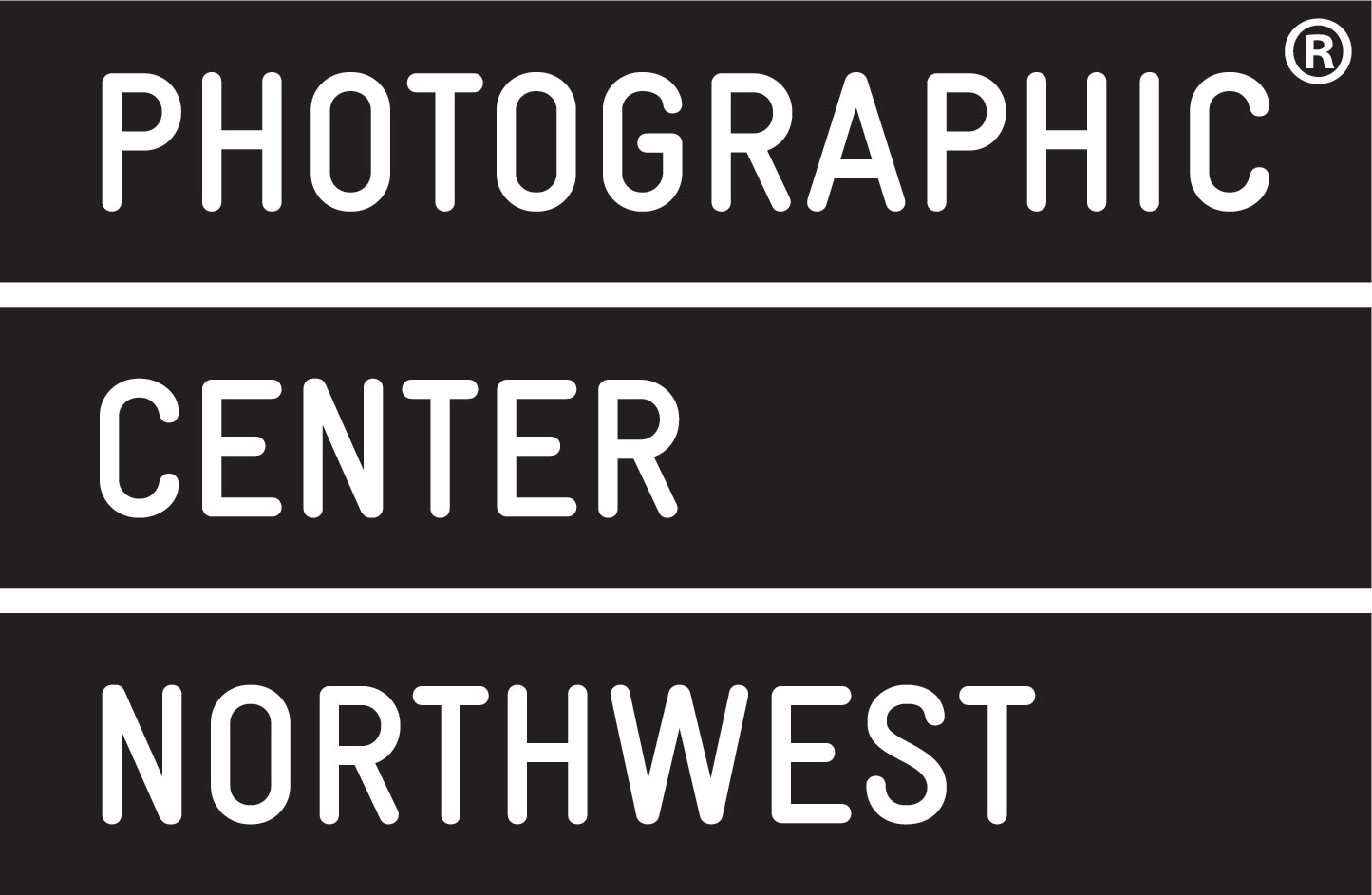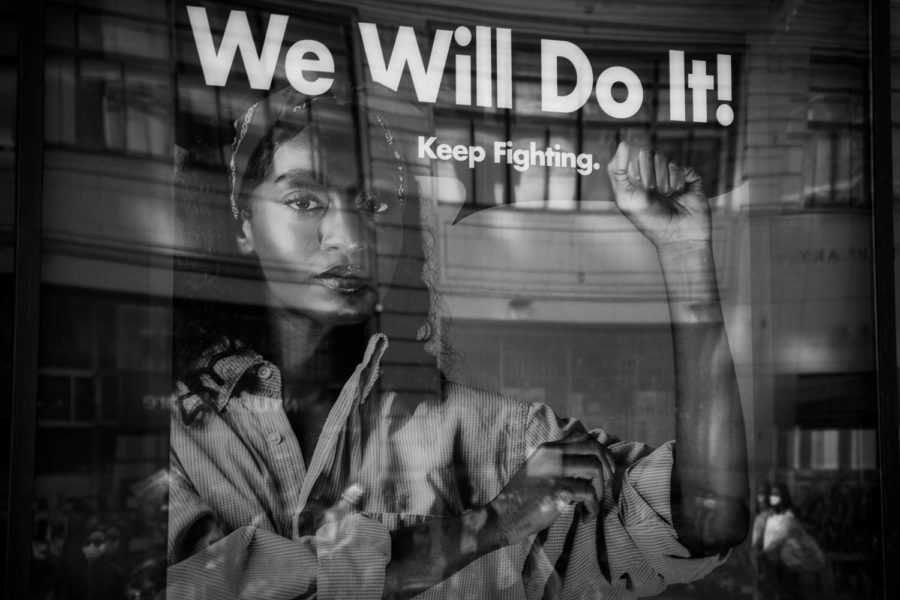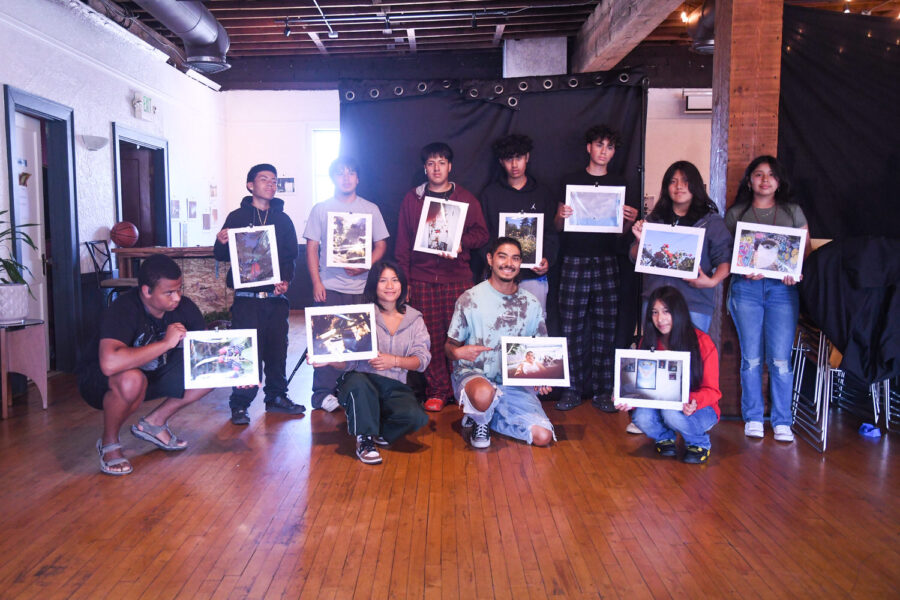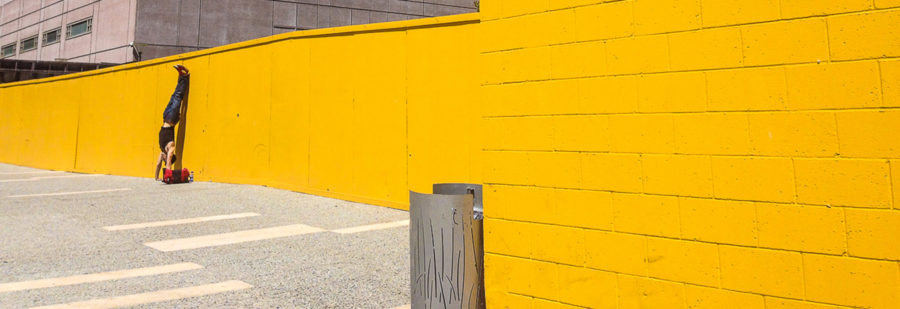A deeper look into the art of collecting photography with PCNW community members
“The only emphasis I have is I collect things that I want to look at for a long time, either because the work is simply beautiful or because I sense I will see something new in a piece over time,” – Stephen Lyons, Platform Gallery.
Ann Pallesen, a former PCNW staff member and 2021 Benefit Committee Member, recently talked with longtime supporters John Jenkins III and Stephen Lyons about collecting art and how anyone interested can get started. Read more from Ann, John and Stephen below and be on the lookout for additional conversations coming soon.
Interviewer: Ann Pallesen
Interviewee: John Jenkins III
Interviewee: Stephen Lyons
Ann: John, We met in the 90s at PCNW! I remember you using the color machine regularly and working on your series that you showed with G. Gibson Gallery. Such nice work!
John: Thanks! I started taking photo classes to learn how to print in color back when PCNW was on 5th Avenue. I remember the gallery was on the first floor and there was that spiral staircase to get down to the darkrooms. The facilities vastly improved with the building on 12th Avenue.
Ann: How did you become interested in photography?
John: I started getting interested in photography when I was a teenager and I got a used Nikkormat to use. I set up a black and white darkroom in our basement and learned how to print. In high school I worked for the newspaper and yearbook taking photos and decided to major in photography in college.
Ann: When and how did your love of collecting art/photography start?
John: During college my photography teacher taught us about the history of photography and I guess that was the beginning. After I graduated and was living in Chicago I used to go to New York for the photography auctions at Sotheby’s and Christies. You could see a range of work by photographers that you couldn’t find in any books. I started buying photos during those trips. The first photo I bought at auction was Diane Arbus’s Boy with Straw Hat Waiting to March in a Pro-War Parade. And then a couple Harry Callahan photos of his wife Eleanor came back with me to Chicago.

Stephen: I was somewhat influenced by John’s method of researching and buying artwork. When I realized that I could actually bid on work by Robert Rauschenberg at an auction house, I gave it a try and I’ve been successful in purchasing several pieces that I still look at frequently. I realized I needed to make my moves before the artist passed away (which he did in 2008) otherwise I wouldn’t be able to pay the increase in the prices of his work.
I also made work for a number of years, mostly mixed media and assemblage, and showed in a few group shows around town. That was how I got a call to meet several other artists to discuss the possibility of opening a new gallery which eventually became Platform Gallery which happened in 2004 founded by Carol Bolt, Blake Haygood, Dirk Park, and me.
Ann: John, you’re an accomplished artist and publisher of photo books (Decode Books), and Stephen is an art dealer (Platform Gallery): How does your familiarity with the art industry enhance or inform your interests in collecting?
Stephen: Not sure that it does other than I typically want to own most of what I’ve shown in the gallery!
Ann: Is there an emphasis/theme to what you collect?
John: I never set out to collect with a particular emphasis or theme, but I did realize after about 10 years into it, that almost everything I collected was a portrait. It was an odd realization since I don’t make portraits in my own work. When I collect now I don’t limit myself to portraits but they usually are.
Stephen: The only “emphasis” I have is I collect things that I want to look at for a long time, either because the work is simply beautiful or because I sense I will see something new in a piece over time.
Ann: Favorite mediums or themes in your collection?
John: There are no favorite themes, but when I like someone’s work, I tend to collect more than a single image. I have ten Arbus prints now, a number of images by Harry Callahan, Joel Peter Witkin, William Christenberry, Wolfgang Tillmans, as well as many local and emerging artists.
Stephen: I am more eclectic in the work I have collected, some of it photography, some of it works on paper, a few sculptures.
Ann: How many pieces starts a collection? Three? Do you have a sense of how many pieces you have at this point?
John: I would say three to five — enough that together they start to say something together. Stephen and I probably have several hundred pieces in our collection, but I really have never counted.
Stephen: Agreed
Ann: Describe what compels you to collect a piece?
John: I’m not impulsive when I buy a piece – it is either an image that I’ve seen before and have always loved, or one that after I see it once I keep thinking about it and can’t get it out of my head.
Stephen: I am impulsive which, only a few times, has resulted in work that I initially was drawn to but doesn’t hold my attention over time. It’s rare, but it has happened.
Ann: What are the parameters between the two of you on collecting pieces? Do you choose things together or separately?
John: We’ve always bought pieces individually. Our rule is that if you are using your own money you can buy anything you like and can put it up in the house. I don’t buy strictly for investment, but there is a secondary market for many of the people I buy, so if I ever decide to downsize there would be a way to sell the work.
Ann: Which was the first piece that made you feel like a collector?
John: I’ve always been a big Warhol fan and his pieces would always come up for auction when I was in New York. I first bought a Marilyn silkscreen print, and then a Liz Taylor. Then I had to have a Campbell Soup can. And I knew I would never sell the pieces. I guess it was about that time I realized I was a collector.
Stephen: When I made a successful bid at an auction for Robert Rauschenberg’s “Star Quarters,” an editioned suite of four 48 inch by 48 inch screen prints on mirrored plexiglass.

Ann: Where do you find your art most often?
John: I’ve always looked at what is being offered at auctions. Today they make it so easy – a little too easy – you can see everything online. You don’t have to go to the auction and sit through it all waiting for your lot to come up for sale. You can watch it on your screen and do other things until it’s time to bid. I’ve also bought a fair amount through galleries, here in Seattle and around the country. It all depends on who or what I am trying to buy. I look to auctions for artists that are no longer living or that are well established and have a secondary market. I look to galleries for very contemporary work.
Stephen: I actually have stopped looking for work to purchase. We have work wrapped and stored in closets that I don’t see enough of so I have put the brakes on buying. For the time being.
Ann: Do you hang in themes? and/or for dinner parties?
John: We have enough work that we can’t hang everything at once, so we rotate the pieces on the walls. We haven’t had any during Covid, but we used to use dinner parties as an excuse to switch out pieces to “freshen up” the house. We have a stairway going upstairs that can hold 15-20 pieces and we might switch it from black and white work to all color. It’s great because you get to fall in love with these “new” pieces all over again!

Ann: What piece(s) gets a big response from visitors in your house?
John: Everyone knows Warhol, so I guess they get the biggest response. And people are interested in Stephen’s Raushenberg prints and objects as well.
Ann: What advice would you give newcomers to art collecting?
John: I know everyone says it, but collect what you love and you’ll never go wrong. I still love the first Arbus I bought and I have seen it virtually everyday for the past 30+ years.
Stephen: Be open to trusting yourself and trusting your eyes. Also most galleries are happy to let you purchase work on layaway. I have sold many artworks to people who can’t swing the purchase price in one swoop but can pay over time. Don’t be afraid to ask a gallerist if they would work with you on making a purchase.
Ann: How have you found art on a limited budget?
John: You can sometimes get a bargain at the high end auction houses, but don’t count on it. There are smaller auction houses – like Swanns or Heritage – that sell less “important” work by the same artists and at lower price points. Fundraising auctions like the PCNW auction coming up is another good place to look. When a monograph of a photographer’s work comes out there is usually a Collector’s Edition where you get a signed print with the book – I’ve bought a number of photos – and books! – that way. Emerging artists sometimes have studio open houses where you can find cool stuff.
Ann: Is there anything else you want to share about your photography collection?
John: It’s interesting how your collection becomes a timeline of your life over the years. The pieces you buy mark what you were doing at that time, what you were interested in and looking at, and even remind you of where you were living.
Thanks, Ann, this has been fun!
More info on PCNW’s 2021 Benefit Auction and how you can start your own collection can be found here: https://www.pcnwbenefit.org/



